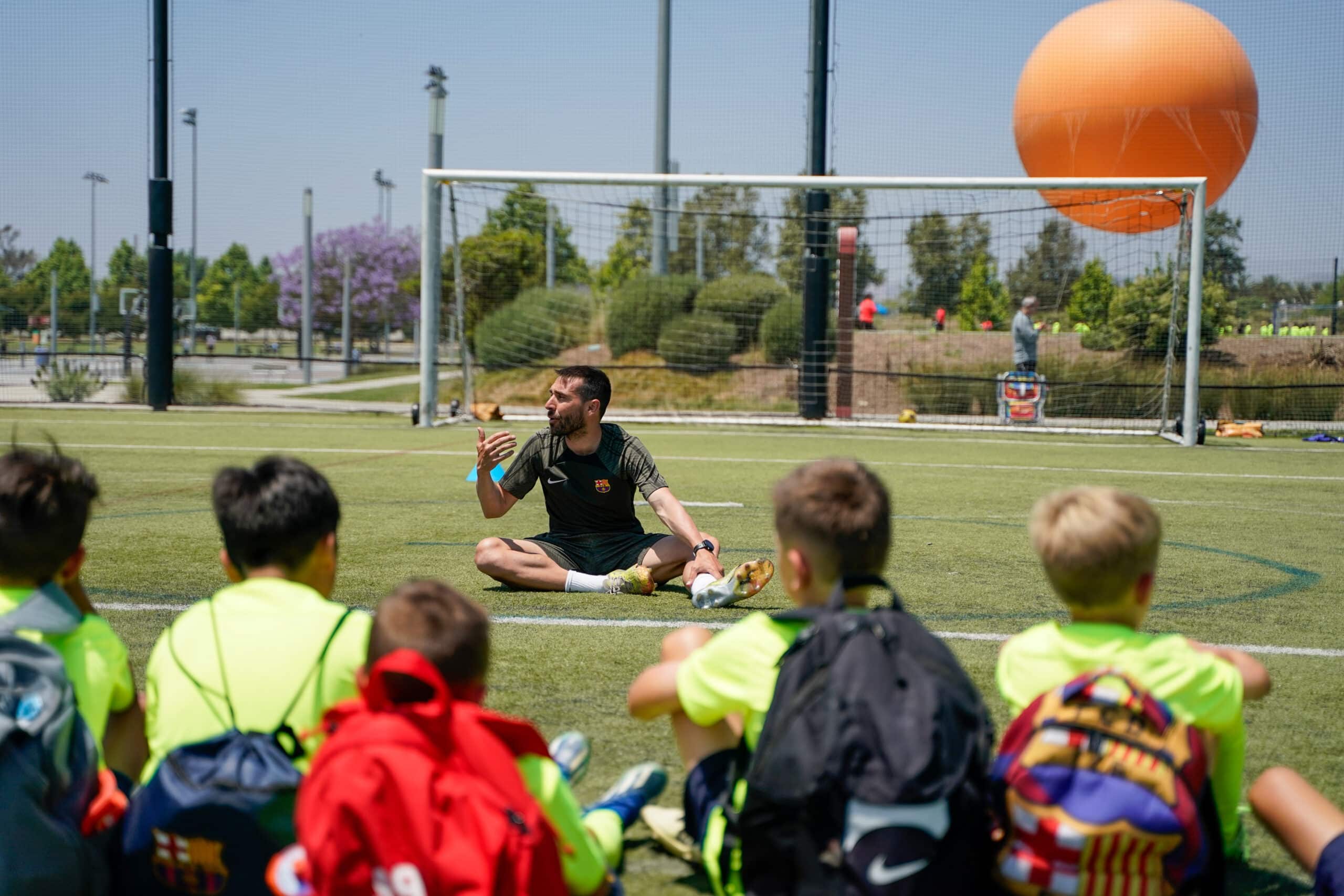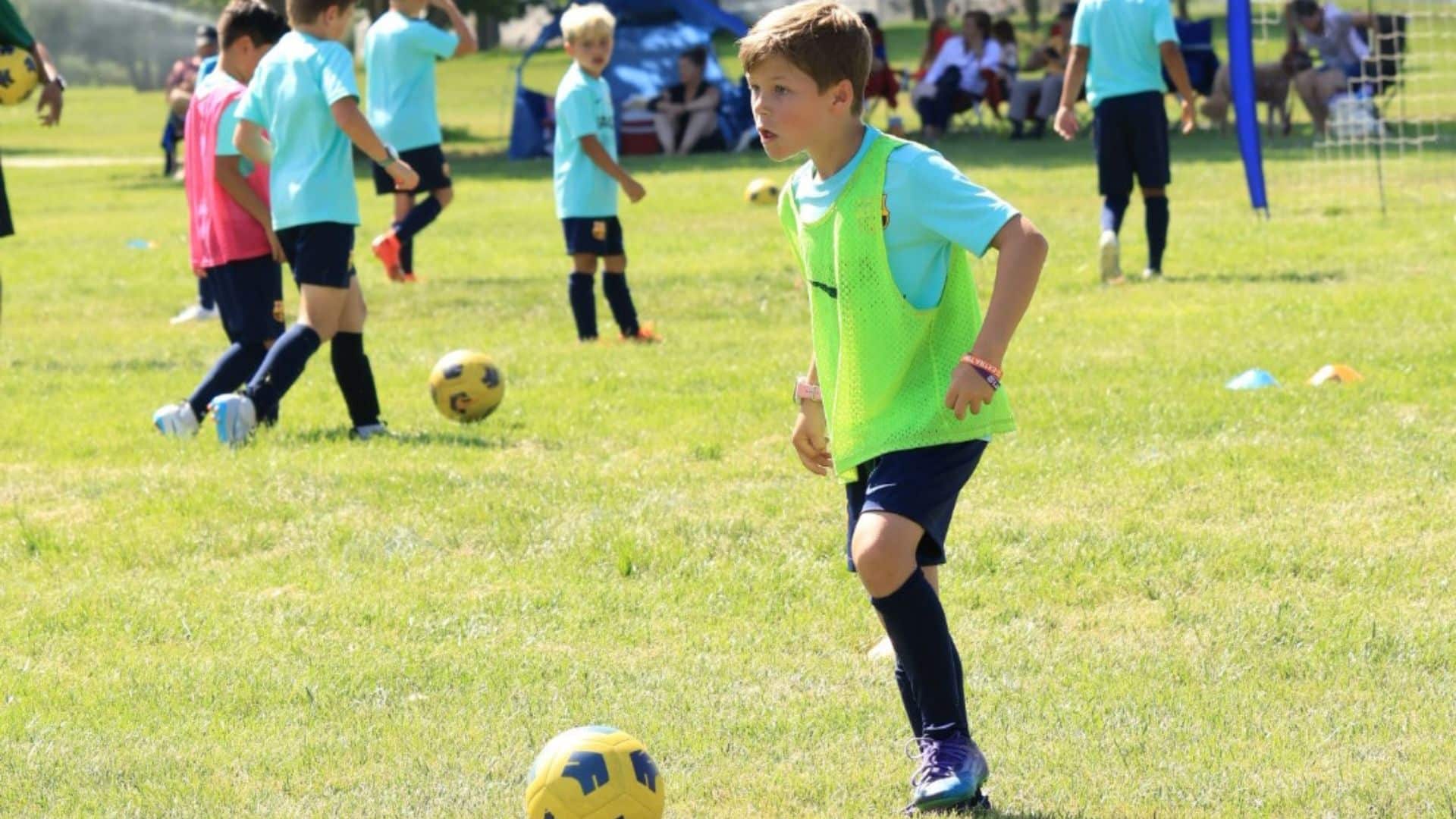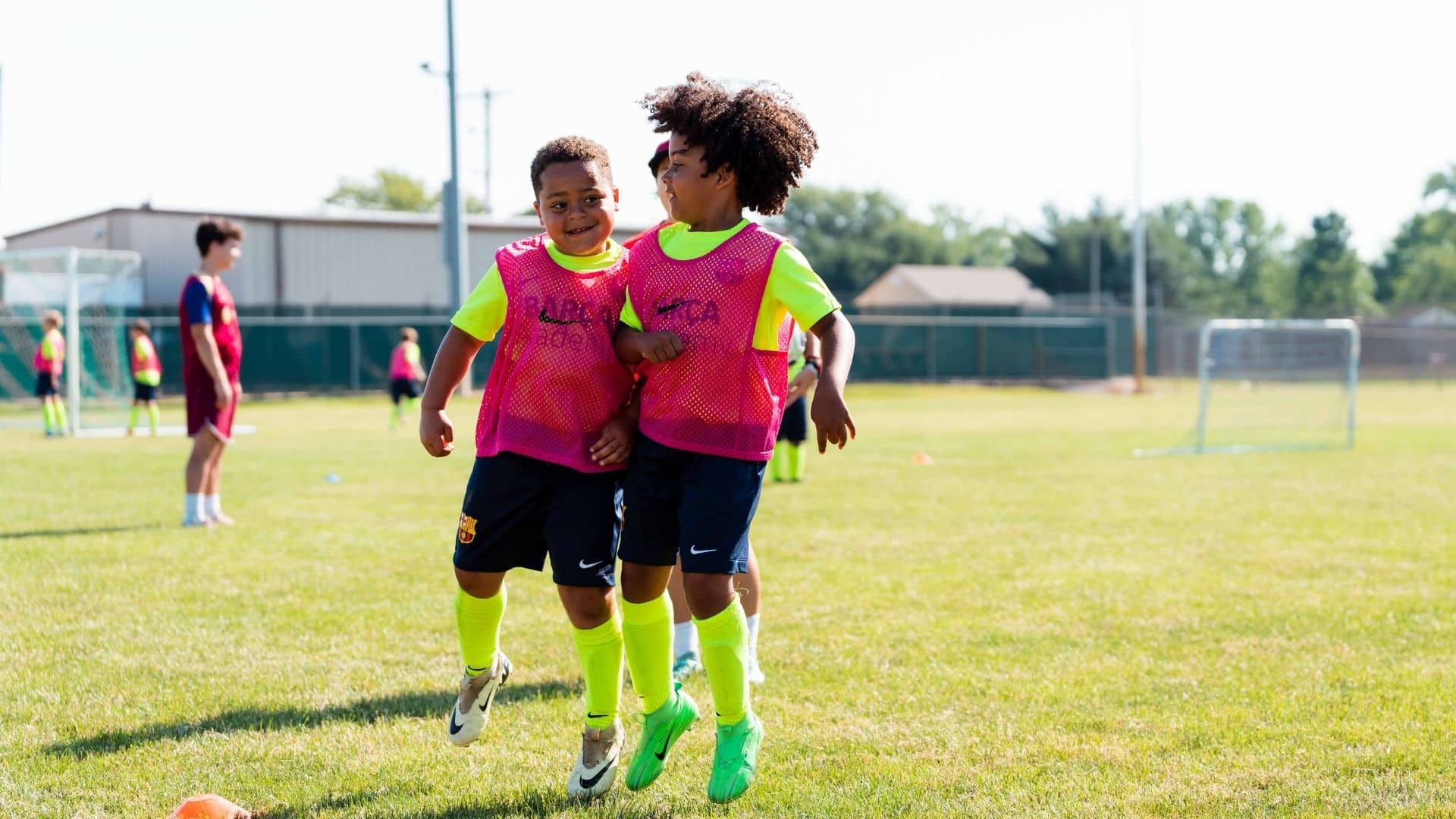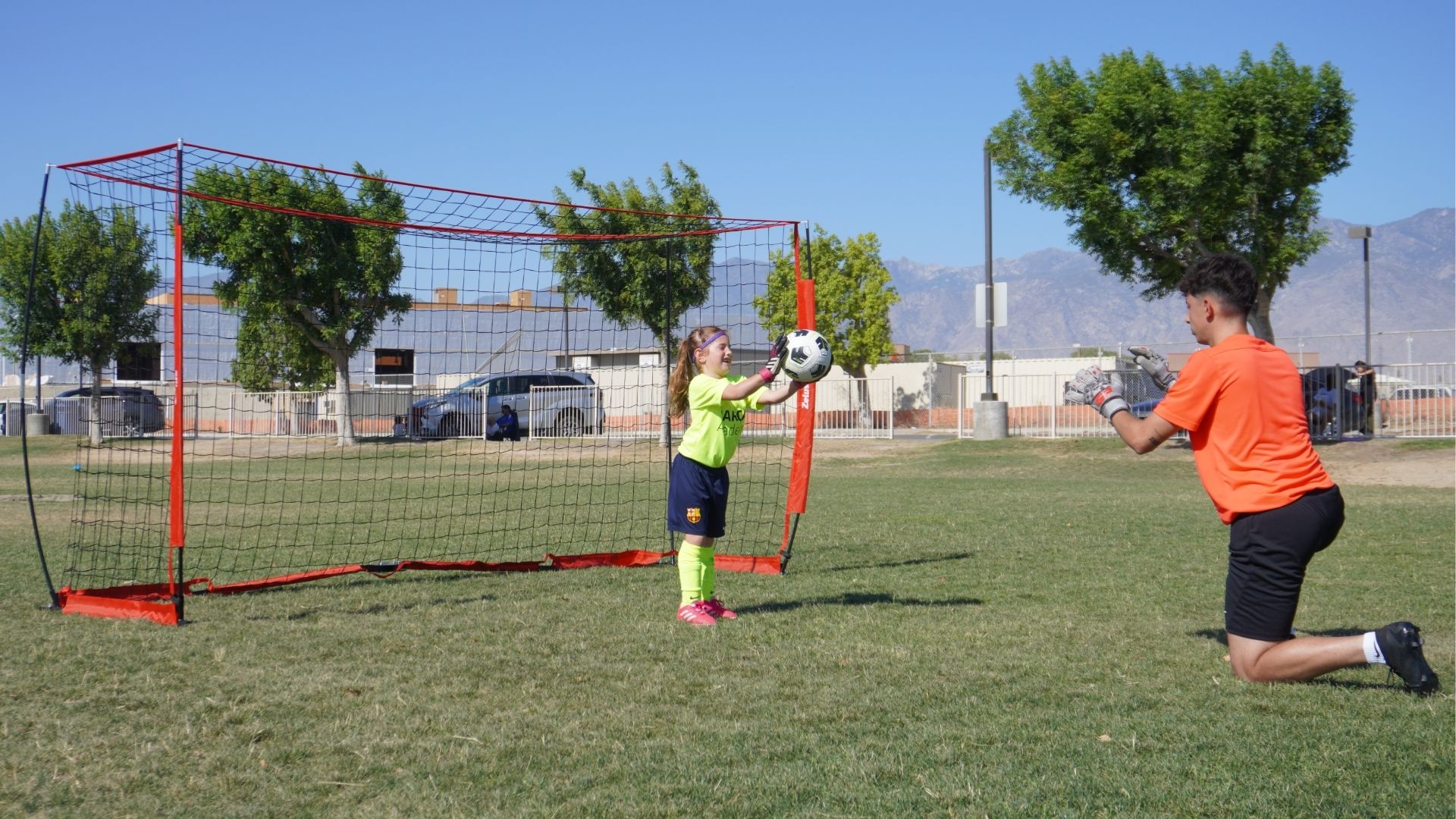As you lace up your cleats and prepare for the next big match, you know that your physical preparation can make or break your performance. The key to avoiding injury and optimizing your game might be simpler than you think. It’s all about flexibility, range of motion, and making sure your body is in the best shape to handle the fast-paced demands of soccer. Curious about how to improve flexibility and incorporate stretching in soccer?
Once you incorporate the right stretching into your routine, you’ll reduce the risk of injuries while also increasing your mobility and endurance on the field. Without further ado, at Barça Academy US we dive into the essential stretches every soccer player should know and how they can help you perform at your best.
Why is flexibility important in soccer?
Here are just a few reasons:
- Better performance: increased flexibility allows for better movement on the field. It can lead to improved speed, agility, and strength, all of which are crucial in soccer.
- Injury prevention: when your muscles are flexible, they’re less likely to become strained or injured during intense play. This means less time on the bench and more time scoring goals.
- Improved recovery: after a demanding match or training session, flexible muscles recover more quickly, reducing soreness and fatigue.
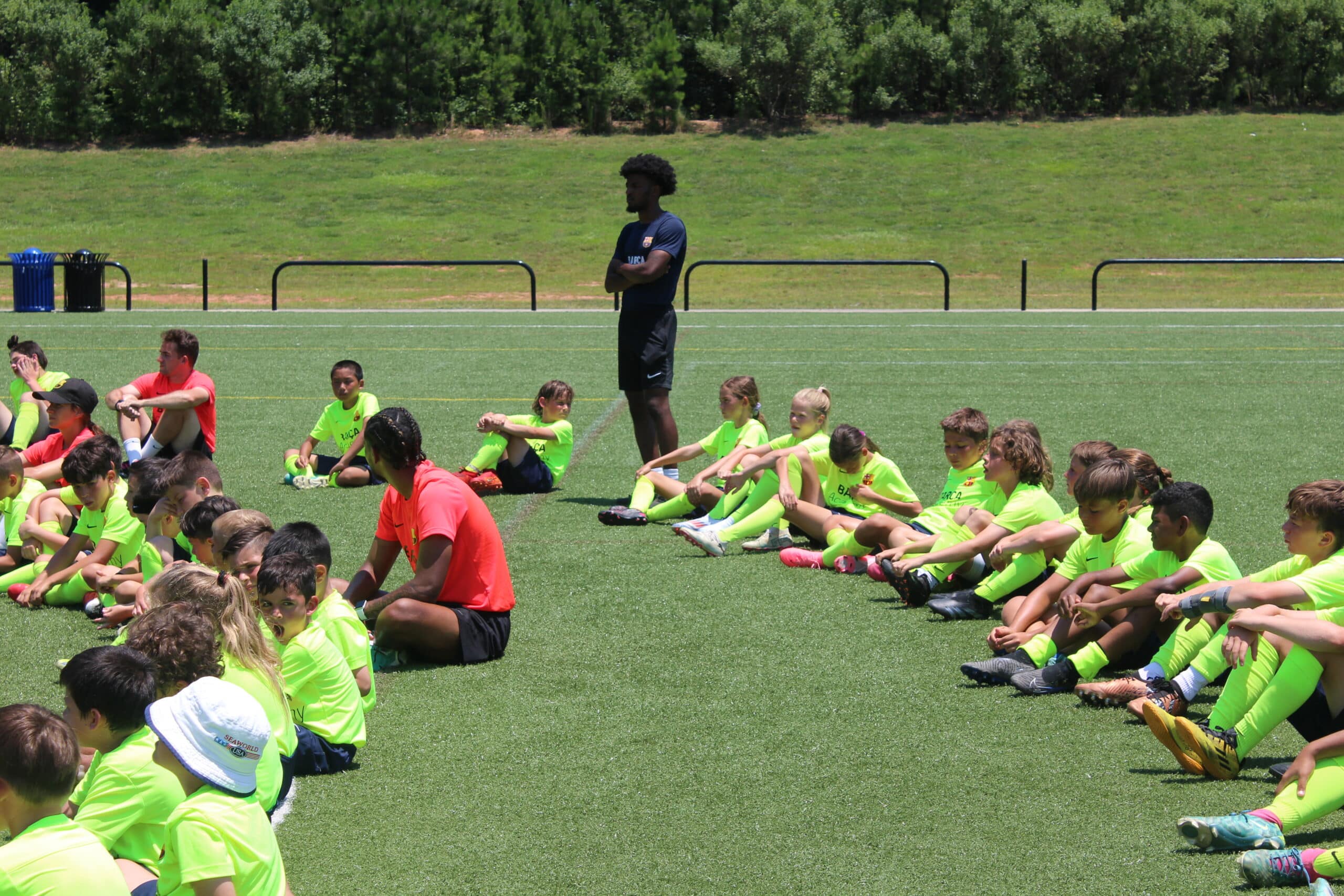
Understanding the basic principles of stretching for soccer players
In the world of soccer, where agility, speed, and endurance are king, flexibility can be your secret weapon. But first, let’s understand the basic principles of stretching for soccer players.
Dynamic vs static stretching
Not all stretches are created equal. Knowing the difference between dynamic and static stretching is essential for a soccer player like you.
- Dynamic stretching: these are active movements where your joints and muscles go through a full range of motion. They can be sport-specific and help warm up your body before a workout or game. Think leg swings, arm circles, and lunges.
- Static stretching: contrarily, static stretches are where you hold a position for a certain period (usually around 30 seconds). It helps increase flexibility and cool your body down after a game or workout. Examples include the hamstring stretch and the butterfly stretch.
While both types are important, dynamic stretches are generally better before a game, and static stretches are great for cooling down afterward.
The right time to stretch
Timing is everything, even when it comes to stretching. As we mentioned earlier, dynamic stretches are great for warming up your muscles before the game. It gets your heart rate up and prepares your body for the intense physical activity to come.
On the flip side, static stretches are perfect for cooling down. After the game, your muscles are warmed up and more elastic, making it the ideal time to work on your flexibility. Plus, it helps remove the lactic acid build-up in your muscles, reducing soreness and speeding up recovery.
Remember, stretching should never be rushed. Take your time, focus on your breath, and ensure you’re performing each stretch correctly. Incorrect stretching can lead to injuries, which is the last thing we want.
Consistency is key!
Like any other aspect of your training, consistency is key when it comes to stretching. Regular stretching can greatly improve your flexibility, performance, and reduce the risk of injuries. So make it a part of your daily routine, and stick with it.
10 essential stretching exercises for soccer players
Every dedicated soccer player knows that stretching is just as important as any other segment of their training routine. But you might be wondering, “What are the best stretching exercises for me?” Here are the best stretching exercises for soccer players, designed to enhance your flexibility and performance on the field.
1. Quad stretch
This classic stretch is aimed at your quadriceps. Simply stand up, bend your knee, grab your foot and pull it towards your glute. Remember to keep your chest straight. You’ll feel a nice stretch along the front of your thigh.
2. Hamstring stretch
For the hamstring stretch, sit on the ground and stretch one leg out in front of you while bending the other so your foot is against your thigh. Lean forward from the hip and try to touch your toes. This stretch targets the back of your thigh.
3. Calf stretch
Lean against a wall with one foot in front of the other. Push your back heel into the ground and lean forward to feel a stretch in your calf muscle.
4. Groin stretch
While sitting, pull your feet in towards your body and push your knees down to the ground. This stretch targets the insides of your thighs – a critical area for soccer players!
5. Glute stretch
While lying flat on your back, cross one leg over the other and gently pull the uncrossed leg towards your chest. This is a great stretch for your glutes.
6. Hip flexor stretch
Take a lunge step forward with one foot while keeping the other foot back, then gently push your hips forward. This stretch is excellent for your hip flexors.
7. Shoulder stretch
Pull one arm across your body and use the other arm to apply pressure. This will provide a good stretch for your shoulders, which is crucial for a powerful throw-in.
8. Tricep stretch
Raise one arm above your head, bend it at the elbow and use your other hand to gently pull the elbow. This stretch targets your triceps.
9. Neck stretch
Slowly tilt your head from side to side and then front and back. Your neck carries a lot of tension, and this stretch can help release it.
10. ITB stretch
Standing up, cross one leg behind the other and lean towards the side of your back foot. This stretch is excellent for your iliotibial band (ITB), a ligament that runs down the outside of your leg.
Benefits of stretching
Now that you are familiar with each exercise, it’s crucial to understand why these stretches are so beneficial.
- Firstly, improved performance. Regular stretching exercises can enhance flexibility, range of motion, and agility, all of which can significantly improve your soccer skills.
- Secondly, reduced risk of injury. By increasing the flexibility of muscles and tendons, stretching aids in injury prevention, an essential aspect in any sport, but especially in soccer with its fast-paced nature.
- Lastly, faster recovery. Stretching exercises can reduce muscle soreness post-training or match, which promotes faster recovery and enables you to get back on the field sooner.
Incorporating stretching soccer exercises into your daily training routine
It’s worth mentioning that it’s not enough to simply know the best stretches for soccer players. The magic truly happens when you seamlessly integrate these stretches into your daily training routine. Here’s how you can do this.
Start your day with a stretch
The first strategy is the easiest, yet often overlooked. After waking up, incorporate some light stretching exercises into your morning routine. This can contribute significantly to your overall flexibility, prepare your muscles for the day ahead, and even help shake off that morning stiffness.
Pre-workout warm-up
Before any workout or training session, warm up adequately. But here’s the key – make sure your warm-up routine includes a series of dynamic stretches. Dynamic stretching exercises help to increase blood flow, warm up the muscles, and improve overall range of motion. So, next time you’re doing your warm-up jog, don’t forget to throw in some high knees, butt kicks, or side lunges as well.
Post-workout cool down
Before you hit the showers, hold up! It’s time for some static stretching. This is when you hold a stretch for about 30 seconds or more. Static stretching after exercise can help reduce muscle fatigue and promote faster recovery. It’s a great way to wind down while still boosting your flexibility.
Incorporate yoga or pilates
If you’re really committed to improving your flexibility and balance, consider weaving some yoga or pilates into your routine. Such exercises can be a fun way to switch up your training while still working on those key flexibility goals. Plus, there’s a wide range of soccer-specific yoga and pilates routines available online.
Take rest days seriously
While it’s important to stretch regularly, don’t forget about rest. Remember, your muscles need time to recover and grow. On your rest days, focus on some light stretching or mobility exercises to keep your muscles loose without overworking them.
The role of stretching in injury prevention for soccer players
Soccer is an exciting and rewarding sport, but it also carries a risk of injury. One effective way to reduce that risk is through regular stretching.
The connection between stretching and injury prevention
When you stretch regularly, you increase your joint mobility and muscle flexibility. This means your muscles can handle the strain of abrupt movements, sudden direction changes, or rapid accelerations during a soccer game. It’s like giving your muscles a shield, they become less prone to pulling, straining, or tearing.
Advanced stretching in soccer: taking flexibility to the next level
If you’ve already mastered the basics of stretching and are looking to up your game, then you should try these exercises. Let’s dive into some advanced stretches designed specifically for professional soccer players, to help you improve your flexibility, performance, and reduce the risk of injuries.
The dynamic lunge stretch
This exercise is excellent for enhancing flexibility in your hip flexors and quadriceps. As you do this stretch, remember to keep your front knee over your ankle and your back knee pointing down.
Hamstring sweep
Next is the hamstring sweep, a phenomenal stretch targeting the back of your thighs. This exercise will increase your flexibility but will improving your range of motion, a vital aspect in soccer where swift movements are key.
Standing quad pull
The standing quad pull is another advanced stretch that can be of tremendous help, focused on your quads and hip flexors. Just remember to maintain proper posture throughout and pull your foot towards your buttock to feel the stretch.
Scorpion stretch
Last but not least, the scorpion stretch. This advanced move targets your core, hip flexors, and quadriceps. It’s a bit tricky, but you’ll appreciate the benefits on the field. Remember, to avoid injury, it’s important not to force the movement.
In the end, stretching in soccer could be described as a mindset: it’s a personal commitment to taking care of your body so it can take care of your game. No matter if you’re chasing your first goal or fine-tuning your performance for the next big match, remember this: the more you respect your body’s need for mobility and balance, the more your body will give back in strength, speed, and resilience. So stretch with intention, train with passion, and play with heart.





